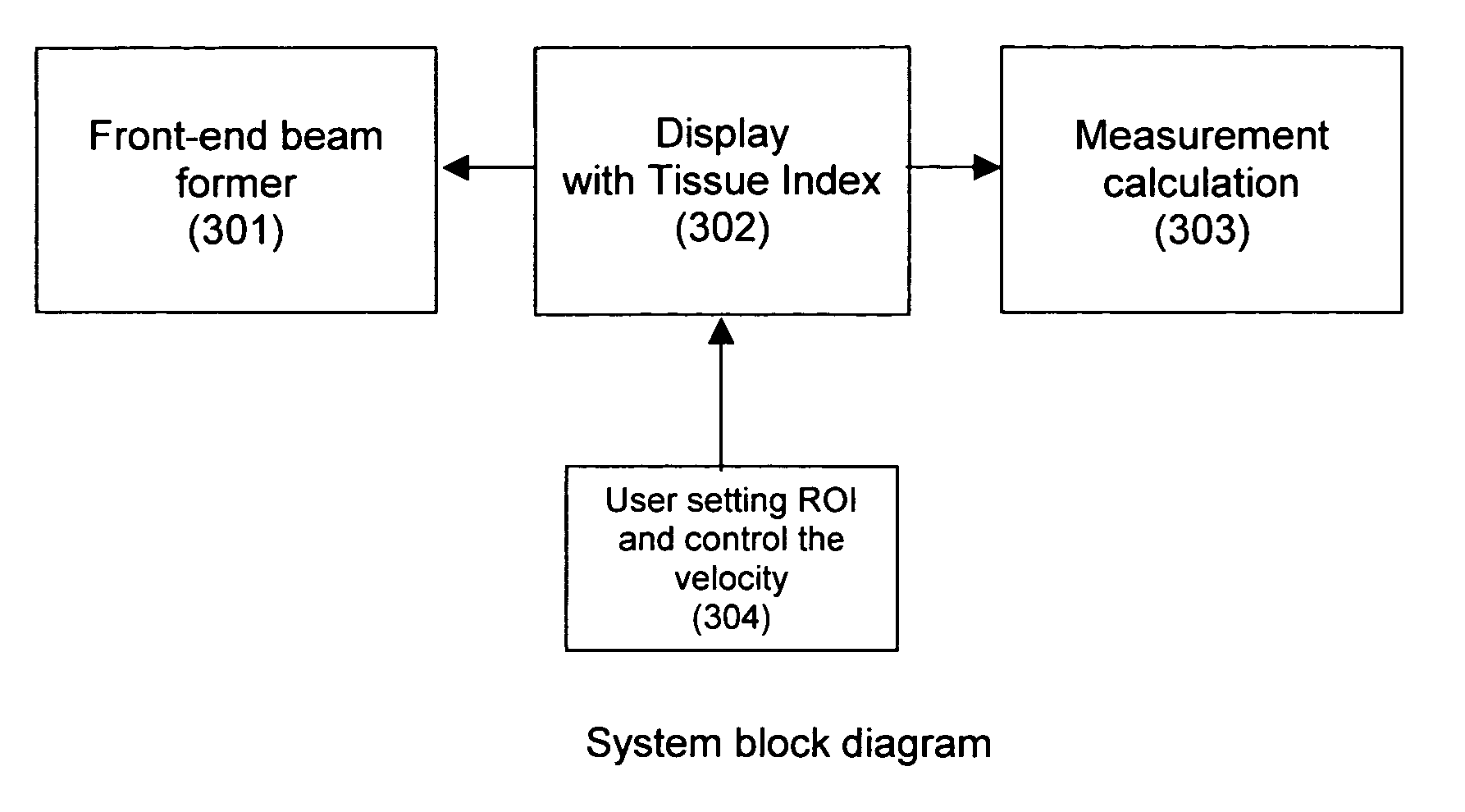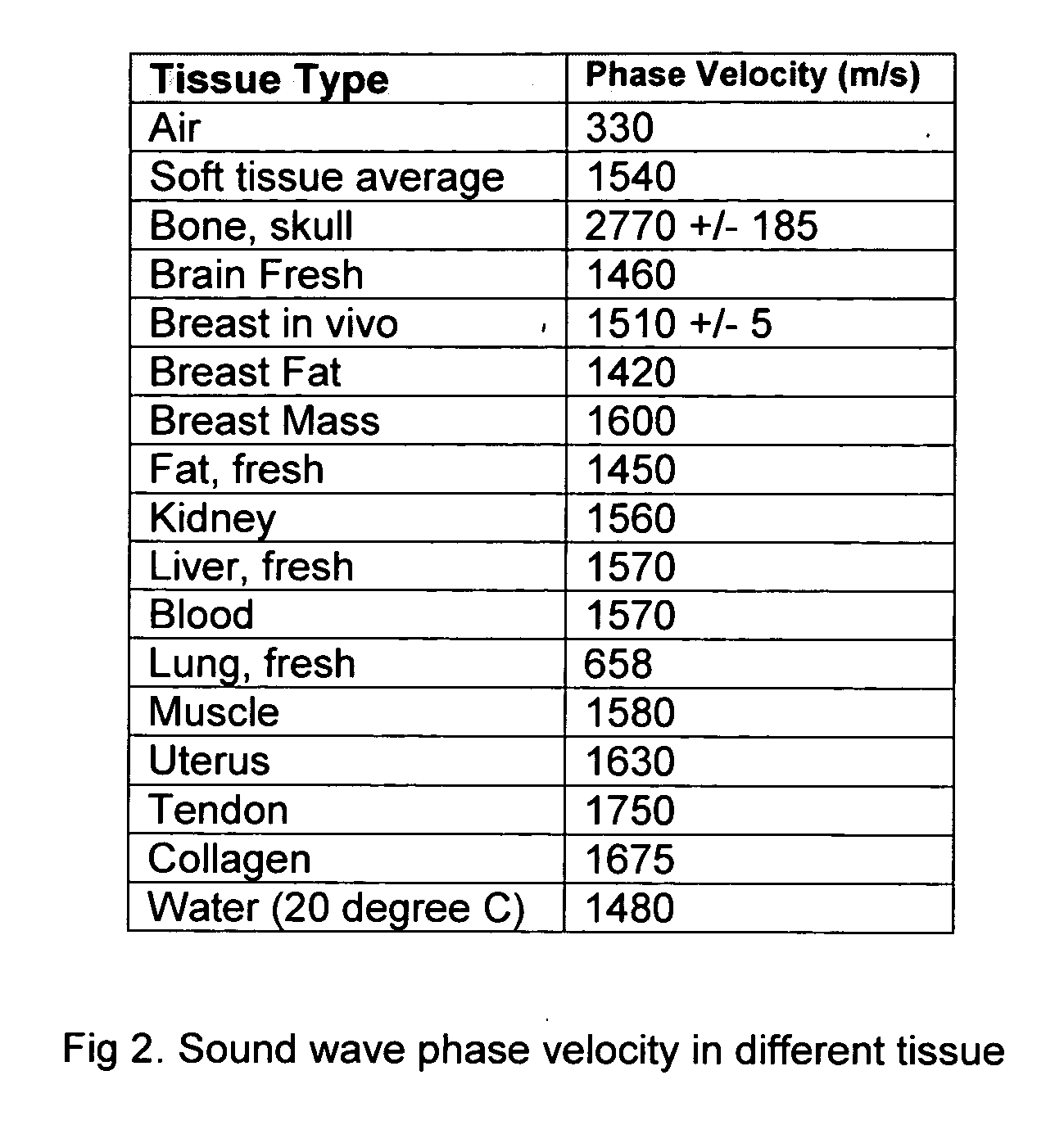Programmable phase velocity in an ultrasonic imaging system
a phase velocity and ultrasonic imaging technology, applied in the field of medical imaging process system and method, can solve the problems of inability to consistently determine the functional relationship between the hardness profile measurement, and the limitations of the application of ultrasonic imaging technology to accurately detect biological tissues of different hardness
- Summary
- Abstract
- Description
- Claims
- Application Information
AI Technical Summary
Benefits of technology
Problems solved by technology
Method used
Image
Examples
Embodiment Construction
[0024] Referring to FIG. 2 for a table that lists media of different tissues for transmission of sound waves. Listed in the table on the right hand column in the table is also the corresponding phase velocity for each of these tissues. According to the listed data shown in FIG. 2, the sound travels in the media, and the phase velocity changes. Depending on the density of the media, the phase velocity varies. As the density of a media increases, the phase velocity of the sound waves transmitted in the media is also increased. Because of these changes, the phase velocity is employed as practical and useful measuring parameter to measure the variations of hardness in a soft tissue. However, the amplitude attenuation may or may not have direct relationship to the tissue hardness. It depends on the tissue homogeneity and absorption.
[0025]FIG. 3 is a functional block diagram for showing an ultrasound image scanning system implemented with user control functions to adjust the phase veloci...
PUM
 Login to View More
Login to View More Abstract
Description
Claims
Application Information
 Login to View More
Login to View More - R&D
- Intellectual Property
- Life Sciences
- Materials
- Tech Scout
- Unparalleled Data Quality
- Higher Quality Content
- 60% Fewer Hallucinations
Browse by: Latest US Patents, China's latest patents, Technical Efficacy Thesaurus, Application Domain, Technology Topic, Popular Technical Reports.
© 2025 PatSnap. All rights reserved.Legal|Privacy policy|Modern Slavery Act Transparency Statement|Sitemap|About US| Contact US: help@patsnap.com



